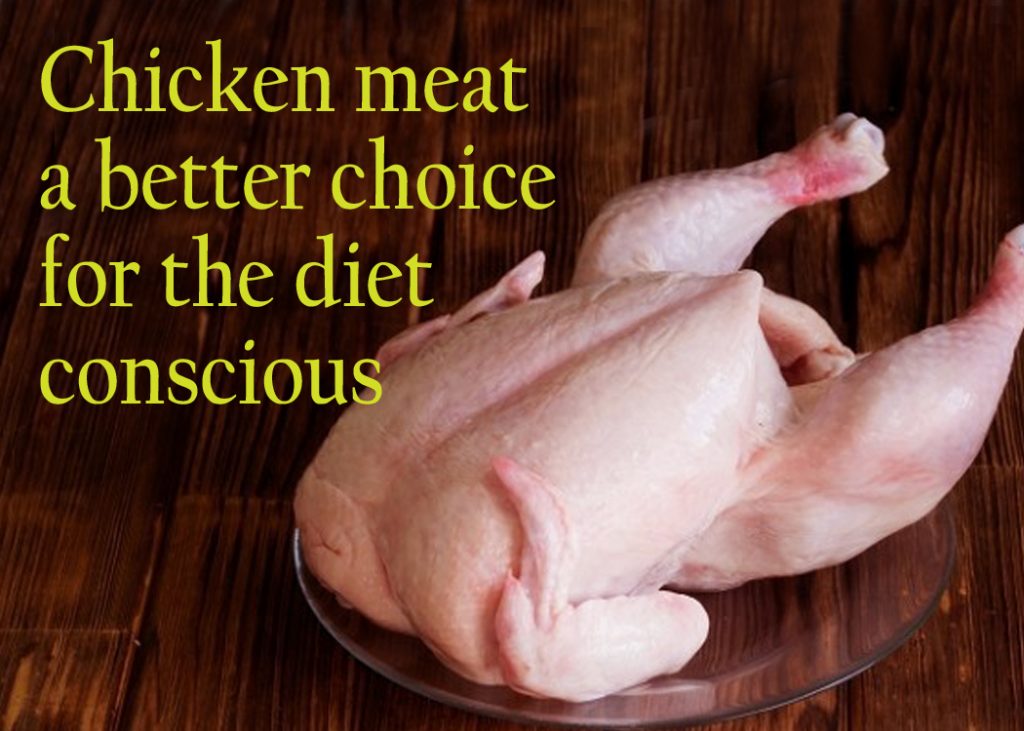
AVN News Desk
When it comes to selection of nutritious meat for human consumption, chicken offers a plethora of nutritional benefits that make it a smart and health-conscious choice for a well-rounded diet as compared to other meat varieties.
The most glaring advantage of chicken meat is the low fat quantity it contains. The fat content in cooked chicken can vary, influenced by factors such as the presence of skin, cut portion, dietary habits of the bird, and its breed. For instance, chicken breast meat has the lowest fat content, containing less than 3 grams of fat per 100 grams, rendering it exceptionally lean. Even darker meat, when the skin is removed, typically registers a modest 5 to 7 grams of fat per 100 grams. Notably, around half of the fat found in chicken meat comprises monounsaturated fats, which are considered favorable for heart health, with only about one-third being less desirable saturated fats. In contrast, red meats generally contain higher proportions of saturated fats, which can fluctuate significantly depending on the specific cut. This factor underscores chicken as a heart-healthy dietary choice.
In stark contrast to beef and lamb, which may contain trans fats linked to coronary heart disease, chicken meat remains free from such fats. In some reports from Canada, beef has been found to contain 2 to 5 percent trans fats, while lamb can soar as high as 8 percent. Prominent health organizations, including the World Cancer Research Fund, have recommended restricting the consumption of red and processed meats, but chicken, notably, is not included in this category, particularly for individuals pursuing a health-conscious diet.
Poultry meat, particularly from chickens that receive diverse diets, emerges as an excellent source of essential polyunsaturated fatty acids (PUFAs), specifically omega-3 (n-3) fatty acids. By incorporating supplements rich in alpha-linolenic acid (an n-3 PUFA), such as flaxseed, into the chickens’ diet, the n-3 PUFA content in chicken meat can be substantially elevated. For example, thigh meat can see its n-3 PUFA content rise from 86mg to 283mg per 100 grams, while minced carcass meat can escalate from 93 to 400mg per 100 grams. Dark meat becomes offers a better choice in terms of PUFA content for individuals keen on consuming heart-healthy fats.
Distinguishing itself from many other meat sources, chicken meat can be enriched with essential nutrients. One notable example is the addition of a small quantity of selenium (in the form of organic selenium) to chicken feed, which substantially heightens the selenium content in breast meat. Selenium, a potent antioxidant, plays a pivotal role in averting specific types of cancer. Given the increasing prevalence of selenium deficiency due to depleted soil conditions, enriched poultry meat can be a valuable resource in combating this deficiency and the associated health hazards.
Chicken meat not only serves as a nutritional powerhouse but also proves to be a budget-friendly choice for individuals with constrained financial resources. Recognised for its healthful attributes, chicken meat is a valuable addition to a well-balanced diet. Whether you intend to curtail your saturated fat intake or augment your consumption of omega-3 fatty acids and selenium, chicken meat presents a versatile and nutritious option for your culinary endeavors.






